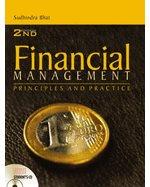Question
Problem . Assume that the market consists of two stocks, Aggressive (A) and Defensive (D), and that the CAPM is true. A has an expected
Problem .
Assume that the market consists of two stocks, Aggressive (A) and Defensive (D), and that the CAPM is true. A has an expected return of 20% and a standard deviation of 35%. D has an expected return of 6% and a standard deviation of 10%. The correlation between the stocks is -0.7 (note: negative correlation). The return on the risk-free assets is 5%. Investors may borrow or lend at the risk-free rate.
Please answer the questions below:
(a) Compute the expected return, the variance, and the Sharpe Ratio of a portfolio that consists of 30% in A and 70% in D
(b) The market value of stock A is $ 13.130 and the market value of stock D is $ 36.870. Report the market value of the market portfolio, and the weights in the portfolio with the highest Sharpe Ratio
(c) Report the CAPM-beta of stock A, and the expected return on stock A according to the CAPM
(d) The average investor holds the market portfolio. Compute the risk-aversion coefficient of the average investor (hint: y = E(rp)rf A2(rp) , where y is the optimal share in the risky asset). What is likely to happen with the risk premium of the market portfolio if the average investor becomes more risk averse?
Step by Step Solution
There are 3 Steps involved in it
Step: 1

Get Instant Access to Expert-Tailored Solutions
See step-by-step solutions with expert insights and AI powered tools for academic success
Step: 2

Step: 3

Ace Your Homework with AI
Get the answers you need in no time with our AI-driven, step-by-step assistance
Get Started


